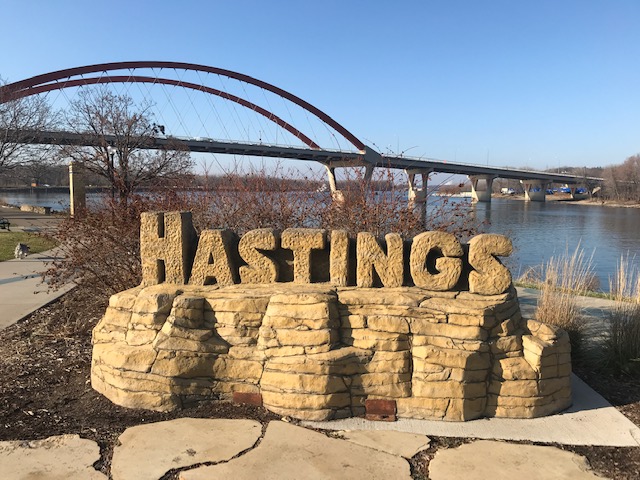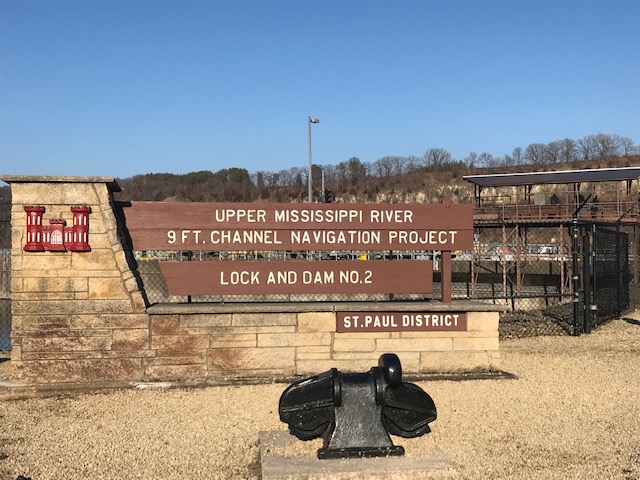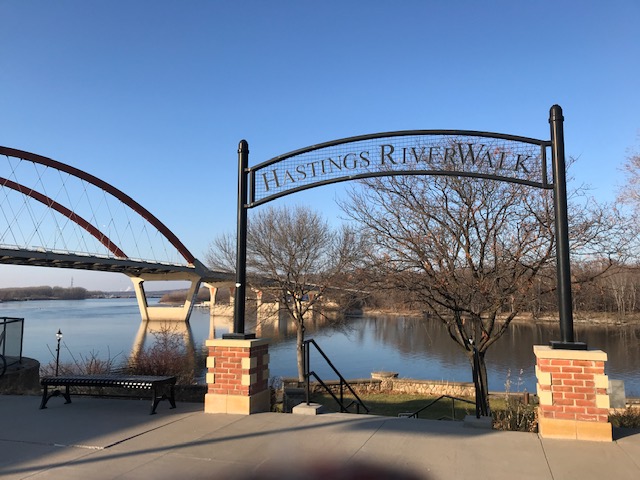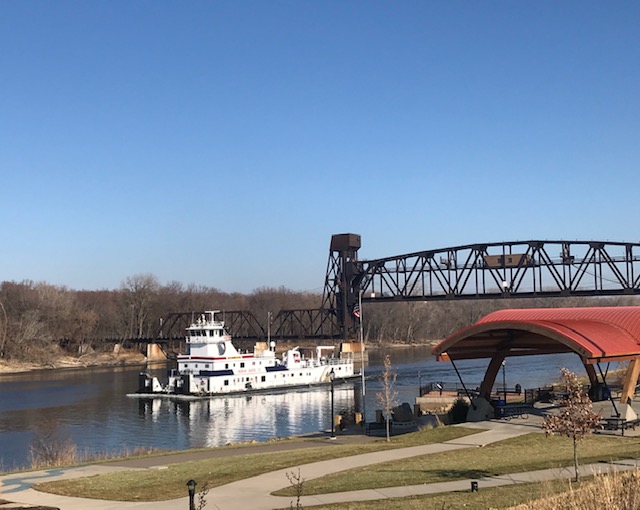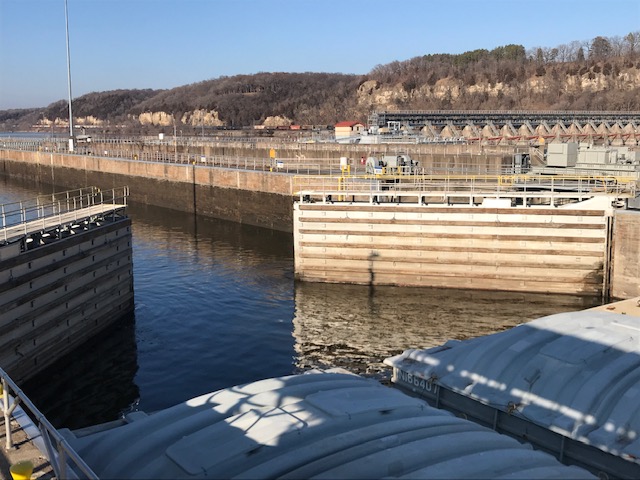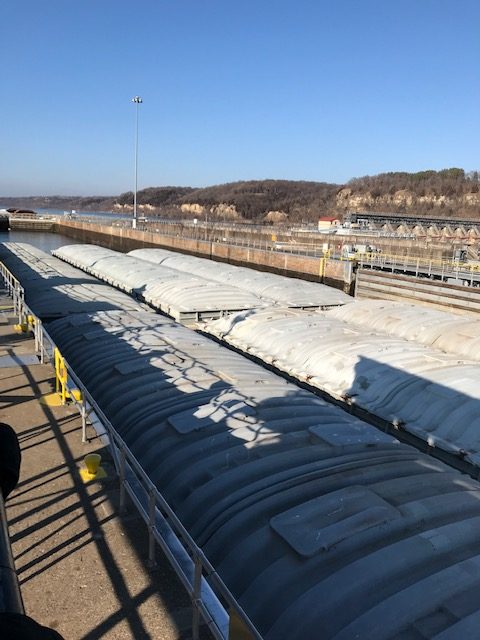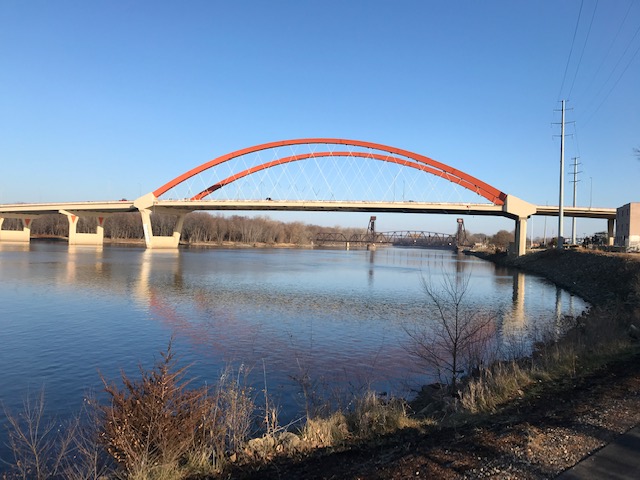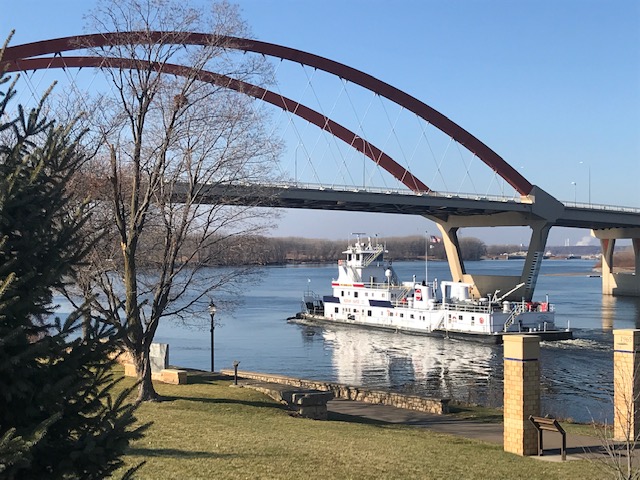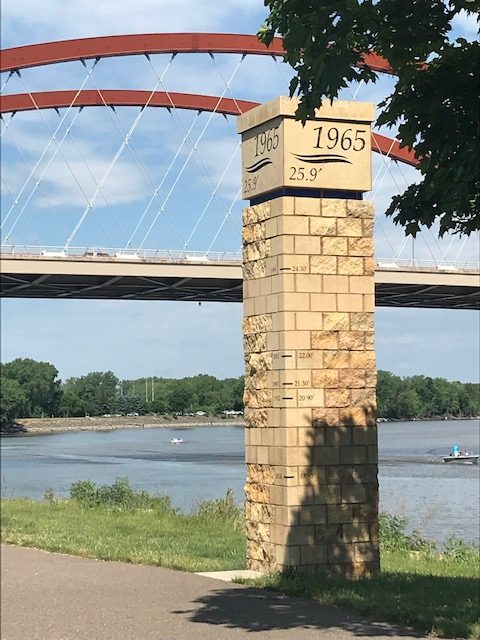Dubuque is Iowa’s oldest city. It was founded in 1833, 13 years before Iowa became a state. The French-Canadian fur trader names Julien Dubuque was instrumental in settling the area, thus its name.
The city has designed a lovely river walk in Port Dubuque, along the Mississippi River. On my recent trip there, my friend and I walked along it several times.
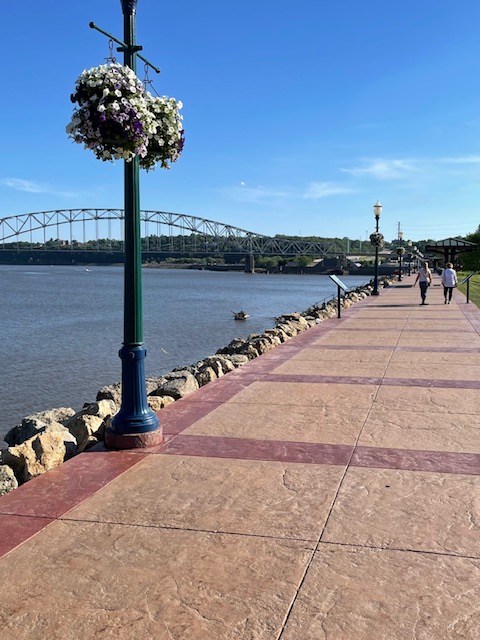
We also sat on benches and watched a lot of river traffic…barges, tugboats, speedboats, etc. I always enjoy watching the “boats go by.”
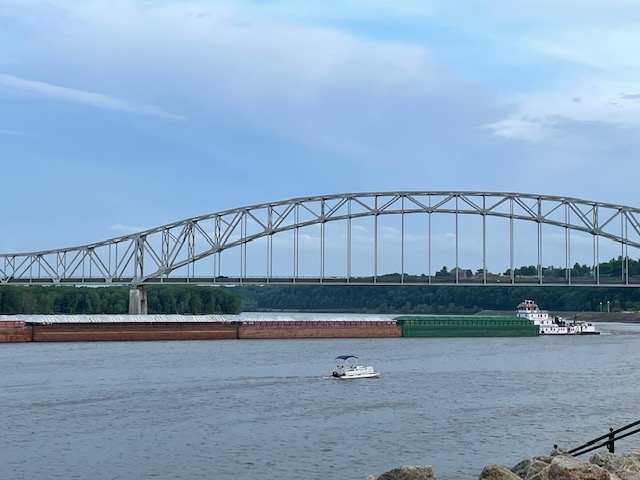

The Shot Tower is located one end of the river walk. It is a national landmark, being one of only a few remaining historic shot towers in the United States.
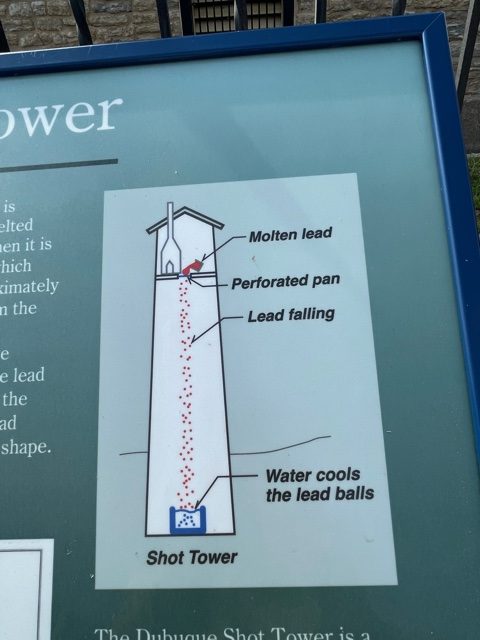
I recently learned what a shot tower is, and found it interesting. According to the plaque, “The Shot Tower was constructed in 1854 to manufacture lead shot ammunition. Molten lead was poured from the top of the tower and passed through a series of sieves to form the shot into its proper size. The shot then landed in a tank of cold water at the bottom of the tower.” Thus, making the ammunition.

There are 30 murals around town, resulting from an event called “Taking it to the Streets”. We noticed several of the murals. I assume there would be a map at the chamber of commerce so one could locate all of them and learn about them. We did not look into this, but there was one mural directly across from our hotel. It was titled Solidarity. It was painted by 75 volunteers, painting side-by-side in one- hour shifts, on this paint-by-number style public art piece; 105’ long X 25” tall.

We walked by the Town Clock. This Town Clock was originally erected in 1873 on top of a building on Main Street, then the clock was moved to the Town Clock Plaza in 1971, where it is today. The clock supposedly maintains accurate time within half second. It stands 110’ tall.
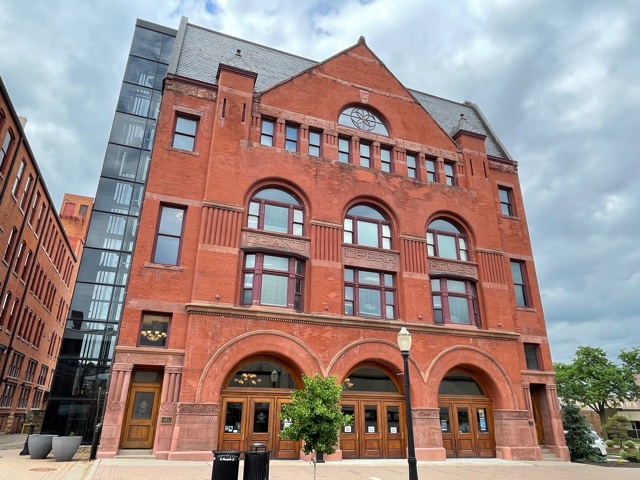
We also walked by the Grand Opera House which was built in 1890. It is on the National Register of Historic Places.
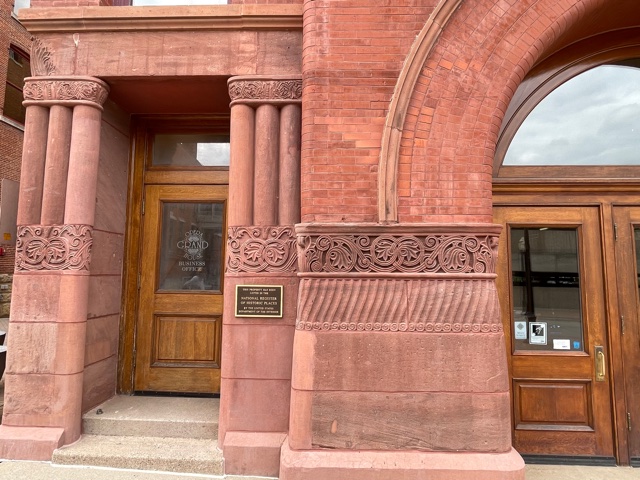
A super moon was scheduled to rise on our last night in Dubuque, so we purposely went to find a bench on the river walk to sit and watch the full moon rise over the Mississippi River. It did not disappoint!
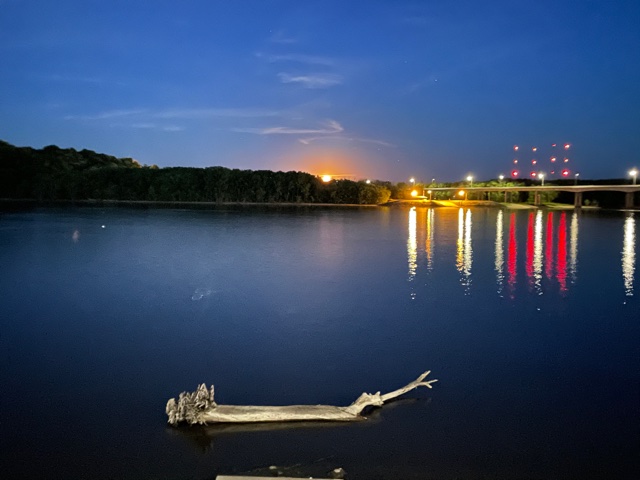
We had a wonderful time in this historic river town…There is so much more this city has to offer. We’ll be back.

